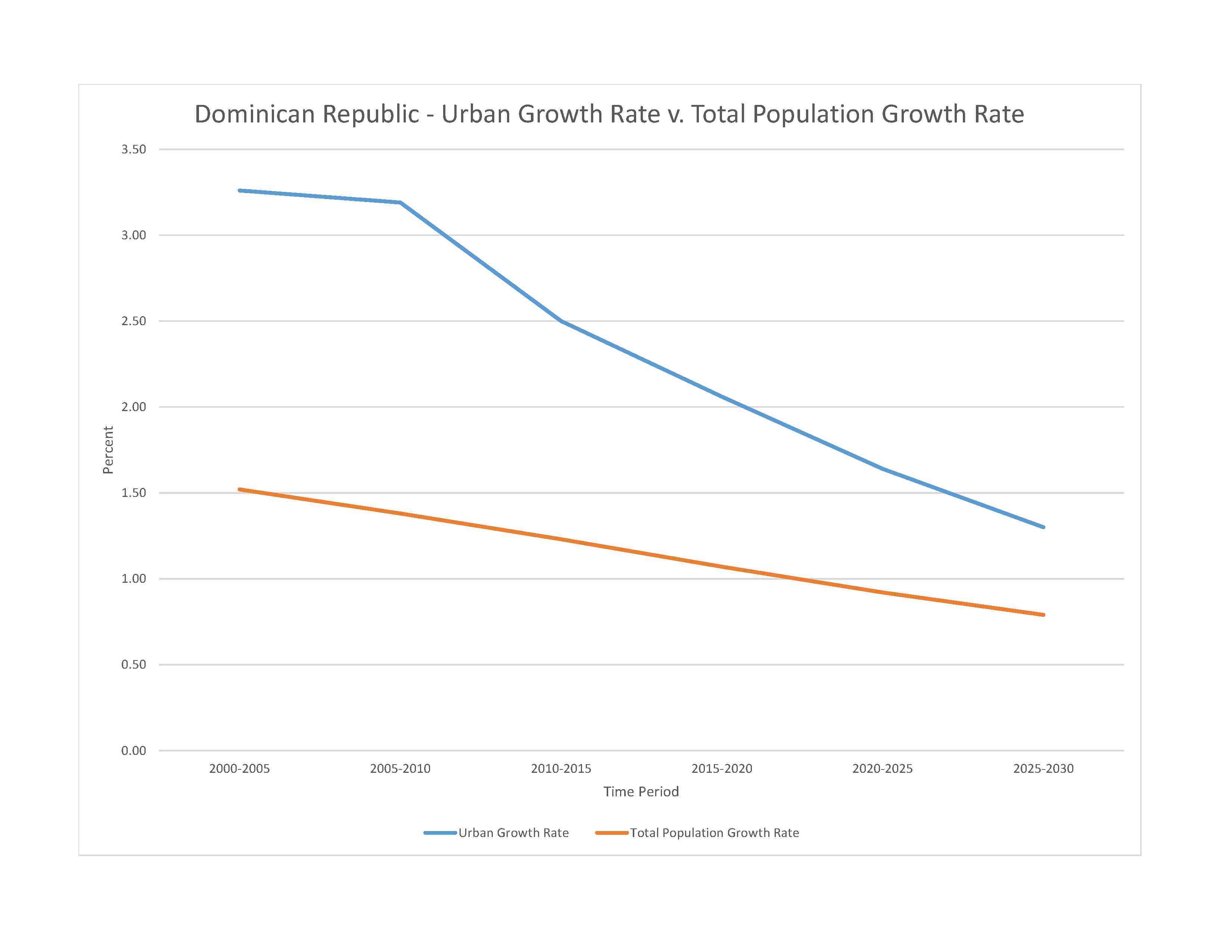
10,790,744 (2023 est.)
noun: Dominican(s)
adjective: Dominican
mixed 70.4% (Mestizo/Indio 58%, Mulatto 12.4%), Black 15.8%, White 13.5%, other 0.3% (2014 est.)
note: respondents self-identified their race; the term "indio" in the Dominican Republic is not associated with people of indigenous ancestry but people of mixed ancestry or skin color between light and dark
Spanish (official)
major-language sample(s):
La Libreta Informativa del Mundo, la fuente indispensable de información básica. (Spanish)
The World Factbook, the indispensable source for basic information.
Spanish audio sample:
Roman Catholic 44.3%, Evangelical 13%, Protestant 7.9%, Adventist 1.4%, other 1.8%, atheist 0.2%, none 29.4%, unspecified 2% (2018 est.)
0-14 years: 25.92% (male 1,422,186/female 1,374,991)
15-64 years: 67.09% (male 3,675,934/female 3,563,597)
65 years and over: 6.99% (2023 est.) (male 355,069/female 398,967)
total dependency ratio: 53.8
youth dependency ratio: 42.2
elderly dependency ratio: 11.6
potential support ratio: 8.6 (2021 est.)
total: 28.9 years (2023 est.)
male: 28.7 years
female: 29 years
0.73% (2023 est.)
17.3 births/1,000 population (2023 est.)
7.3 deaths/1,000 population (2023 est.)
-2.7 migrant(s)/1,000 population (2023 est.)
coastal development is significant, especially in the southern coastal plains and the Cibao Valley, where population density is highest; smaller population clusters exist in the interior mountains (Cordillera Central)
urban population: 84.4% of total population (2023)
rate of urbanization: 1.64% annual rate of change (2020-25 est.)

3.524 million SANTO DOMINGO (capital) (2023)
at birth: 1.04 male(s)/female
0-14 years: 1.03 male(s)/female
15-64 years: 1.03 male(s)/female
65 years and over: 0.89 male(s)/female
total population: 1.02 male(s)/female (2023 est.)
20.9 years (2013 est.)
note: data represents median age at first birth among women 25-49
107 deaths/100,000 live births (2020 est.)
total: 22.7 deaths/1,000 live births (2023 est.)
male: 25.4 deaths/1,000 live births
female: 19.9 deaths/1,000 live births
total population: 71.9 years (2023 est.)
male: 70.3 years
female: 73.5 years
2.13 children born/woman (2023 est.)
1.05 (2023 est.)
62.8% (2019)
improved: urban: 98.3% of population
rural: 91.7% of population
total: 97.2% of population
unimproved: urban: 1.7% of population
rural: 8.3% of population
total: 2.8% of population (2020 est.)
4.9% of GDP (2020)
1.45 physicians/1,000 population (2019)
1.6 beds/1,000 population (2017)
improved: urban: 97.4% of population
rural: 91.3% of population
total: 96.3% of population
unimproved: urban: 2.6% of population
rural: 8.7% of population
total: 3.7% of population (2020 est.)
degree of risk: high (2023)
food or waterborne diseases: bacterial diarrhea, hepatitis A, and typhoid fever
vectorborne diseases: dengue fever
27.6% (2016)
total: 5.56 liters of pure alcohol (2019 est.)
beer: 3.15 liters of pure alcohol (2019 est.)
wine: 0.17 liters of pure alcohol (2019 est.)
spirits: 2.18 liters of pure alcohol (2019 est.)
other alcohols: 0.06 liters of pure alcohol (2019 est.)
total: 10.6% (2020 est.)
male: 14.6% (2020 est.)
female: 6.5% (2020 est.)
3% (2019)
52.1% (2023 est.)
women married by age 15: 9.4%
women married by age 18: 31.5% (2019 est.)
4.6% of GDP (2020 est.)
definition: age 15 and over can read and write
total population: 95.2%
male: 95.1%
female: 95.3% (2021)
total: 14 years
male: 13 years
female: 15 years (2017)
NOTE: The information regarding Dominican Republic on this page is re-published from the 2024 World Fact Book of the United States Central Intelligence Agency and other sources. No claims are made regarding the accuracy of Dominican Republic 2024 information contained here. All suggestions for corrections of any errors about Dominican Republic 2024 should be addressed to the CIA or the source cited on each page.
This page was last modified 04 May 24, Copyright © 2024 ITA all rights reserved.